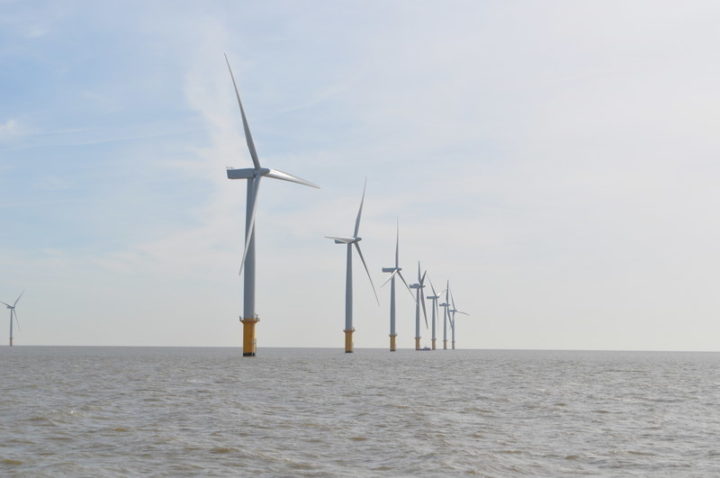Ten Point Plan: no going back now
The PM's plan for an industrial revolution brings with it some very big results
By Jonny Marshall
Share
Last updated:
This week’s long-hyped Ten Point Plan for a Green Industrial Revolution is finally here. Prompting a range of reviews, from being welcomed by the CCC and some green groups, to being criticised by the Labour Party (and some green groups), it is an undeniable step forward.
This blog runs through what we know so far, and what it means.
1. Electric cars and vans
This is the big one. Any plans to tackle UK emissions that didn’t take on the largest contributor (and one that has increased since 2013) simply wouldn’t have cut the mustard.
This a signal sent to the heart of the global automotive industry that, if you want to invest in the future, Britain is the place for you; that the UK is following its global lead away from coal with a comparable move away from polluting cars and vans.
There will, of course, be millions of EVs on our roads within just a few years, and well before 2030 (best to ignore suggestions nobody will buy an EV until Jan 1 2030). National Grid – which, being responsible for ensuring that they can be plugged in, is safe to assume has a grasp on the matter – reckon ambitious signals (like a 2030 phase-out) could see over 11 million EVs on the road by 2030 and 36 million by 2040. This will not only clean up driving, but help with overall decarbonisation too.
As well as the deadline, the announcement brings investment for the charging network and support for up-front costs, facing up to these concerns and others such as range. Also tucked away is a pledge to end the sale of diesel HGVs. Overall, this is an impressive commitment.
2. Power

Although previously announced and re-announced, the 40 GW offshore wind target remains hugely ambitious, placing the UK well ahead of the rest of the pack. It will leverage vast amounts of private capital, leading to cheap and clean offshore wind being the backbone of the UK’s energy mix, something utterly unthinkable just a few years ago.
However, although the power output from this growing army of turbines would match around 40% of current electricity demand, rising electrification of heat and transport will see this proportion reduce in decades to come. Some National Grid scenarios see demand closing in on 700 terrwatt hours (TWh) by mid-century, more than double current power demand; no wonder increased figures of 100GW are already being mooted.
Elsewhere, although not one of the ten points, but surely to come soon, are the next stages of the Government’s Smart Systems and Flexibility Plan – a fairly major revamp of the regulations that bind the electricity system, with the potential to shave billions from energy bills.
Removing barriers to smart technology and storage, making our homes smarter and better connected, and finally recognising the value of flexibility with new markets is essential in modernising the grid so it can make the most of vast amounts of clean and cheap power.
Nuclear, of course, still remains on the table, although the pot of cash for SMRs (small modular nuclear reactors) is much less than expected and probably suggests a dawning realisation that the current 20% contribution of atomic power to our generation mix will not be maintained.
Keeping Sizewell (or Wylfa?) hopes alive may be sensible in avoiding closing off sources of clean electricity, but the lack of its explicit inclusion in the plan probably gives an insight into Government enthusiasm for large nuclear, and one that probably doesn’t bode well long-term.
Homes
Extending the faltering Green Homes Grant was inevitable. The latest word from BEIS was that just 1,000 suppliers had signed up, yet the first few weeks of the scheme saw more than 20,000 applications for vouchers. ECIU polling when the scheme kicked off provided an early indication of high levels of demand, and that suppliers would have their work cut out, if the policy could land. An extra year should see promises of lower bills, cut emissions and a boost to jobs around the country made good.
Widening ambition on energy efficiency to ‘schools and hospitals’ will probably gobble up most of the additional £1bn of funding (the 2019 Tory manifesto pledged £640m for public sector buildings), while a needed boost to the pared-back Social Housing Decarbonisation Fund would also eat into this. Overall though, the pledge of additional cash mirrors recent words from Energy Minister Kwasi Kwarteng that more is coming on building efficiency.
Also of note is an update on the Future Homes Standard, which mandates high (although not really high enough) standards for new homes, as well as a point from which no new houses will be connected to the gas grid – an essential first step to moving away from fossil fuel use in homes.

Bringing this policy forward to 2023 (from 2025) will save more than half a million new homes from being linked up to the gas grid unnecessarily. And although the emissions impact of this is low, at least it doesn’t make the problem worse.
Inexorably linked to better insulation is the shift to clean heat sources. A target of 600,000 heat pumps installed per year by 2028 will displace around a third of total boilers sold in the UK, and isn’t far off the goal laid out for Government by the CCC. Inevitably campaigners will ask for more, but this is a dramatic increase in ambition from current installation levels, which expects current policy to deliver just 25,000 heat pumps from 2022-24.
Plans for a ‘hydrogen town’ will also raise eyebrows, especially among stakeholders unhappy with its use as a source of domestic heat. A likely outcome from this, though, is another indication that heat pumps are ready to go now, whereas hydrogen remains a few years away from practical widespread deployment. The stated scale of hydrogen vs heat pumps also gives a window into the Government’s thinking on heat.
All eyes now on the impending Heat and Buildings Decarbonisation Strategy to bring in policies that beef up demand and make these targets a reality.
Industry
Here lies the bulk of the focus, promising hundreds of thousands of future-proofed, clean, high-skilled jobs outside of London and the South East through carbon sequestering (CCS), support for hydrogen and backing for innovation.
The plan sets out an extra £200m for carbon capture, backed up with a target of 10 MtCO2 per year sequestered per year by 2030 – roughly equivalent to that produced from three million homes. (The country’s four largest industrial clusters that Johnson has in his sights pump out a collective 28 MtCO2 per year). Entirely valid concerns remain over the extent to which CCS should displace actual emissions reduction, but all serious analyses show it will be needed to reach net zero, so this is a good first step.
The boost to hydrogen was also widely expected, following months of incessant lobbying. The plan targets 5 GW of hydrogen production capacity by 2030 (although we await clarity on whether this will be truly carbon-free) with a theoretical output of up to 44TWh (around 1.1 million tonnes) of hydrogen each year.
Another proposal, reducing the carbon intensity of the gas grid by blending in 20% hydrogen (or 7% by energy) will gobble up close to 1.5x this amount though, so more production capacity will be needed if there will be enough to meet this, as well as some for industrial processes, such as replacing coking coal in steel production.
For now, this receives a largely tentative welcome, with much more detail on both production and uses keenly awaited in next year’s Hydrogen Strategy.

Planes, Trains and Public Transport
Much of this was re-announced, save for an expected mandate for biofuels in shipping and aviation. There is very little expectation that ‘Jet Zero’, the Government’s plans for tackling aviation emissions, will bear significant fruit in the near future, but there is also little harm in taking a punt on solving an increasingly-large problem, as long as it doesn’t come at the expense of action shown to work now.
Hopeful news on the Covid vaccine front should hopefully mean that concerns over plummeting public transport use do not come to reality, while recent strong words from the Transport Secretary show that the Government is planning on sticking to pledges to boost walking and cycling – all vital in curbing car miles and cleaning up the air.
Nature
Nature restoration was noted as being overlooked even by those in Government, with cash for so-called natural climate solutions in short supply. That being said, one wouldn’t be looking to a ‘plan for nature’ for progress on a green industrial revolution, so it makes sense why greenery played only a bit part. The Environment Bill and whatever replaces the Common Agricultural Policy are expected to do the heavy lifting here.
Overall, though, it is important to reflect on this plan as both a marker in the sand and as a starting gun. It is, of course, by no means complete, but it brings the strongest pro-climate statement. The slew of policy documents now well-overdue should provide the detail on how these targets are to be met, culminating in a Net Zero strategy next year that we can hope will set out a clear path to carbon neutrality.
Even three years ago, the idea that announcements on this scale would be made in the UK would be preposterous. While there remains a lot of heavy lifting to be done on policy, the PM’s pivot should be seen as overwhelmingly good news.
Share